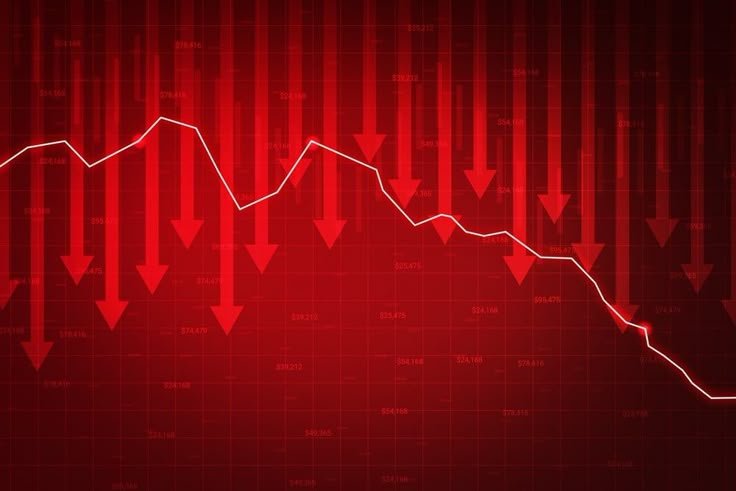Indian Stock Market in 2025: Key Trends, Gainers, and Losers
The Indian stock market has been experiencing turbulence in 2025 due to a combination of global trade tensions, foreign investor sell-offs, weak domestic economic indicators, and currency depreciation. The Nifty 50 index has declined by 3% YTD as of February 14, 2025, highlighting the negative sentiment in the market.
Despite these challenges, some stocks in the BSE 500 index have delivered exceptional returns, gaining between 15% and 29% YTD. These stocks have not only outperformed the Nifty 50 but have also surpassed the 13% YTD returns of gold, which has traditionally been a preferred safe-haven investment in uncertain times.
This article analyzes the key market drivers, top-performing and worst-performing stocks, technical trends, and investment strategies for 2025.
1. Factors Influencing the Stock Market in 2025
1.1 Global Trade Tensions and U.S. Tariff Policies
One of the most significant reasons for market volatility is the tariff policies introduced by U.S. President Donald Trump. His administration has imposed higher tariffs on Indian exports, particularly affecting industries such as:
- Steel and metal exports: The imposition of higher tariffs on steel and aluminum exports has made Indian products less competitive in global markets, leading to lower export revenue and reduced profitability for domestic manufacturers.
- Textiles and apparel: The Indian textile industry, which relies heavily on exports to the U.S., has been affected by increased duties, leading to a slowdown in production and job losses.
- IT and software services: Stricter visa policies and tariff-related uncertainties have caused many IT companies to face contract delays and reduced outsourcing demand from American clients.
These trade restrictions have disrupted supply chains, hurt profit margins, and led to concerns about declining export revenues. The uncertainty surrounding global trade relations and ongoing trade wars has contributed to cautious investor sentiment.
1.2 Foreign Portfolio Investor (FPI) Outflows
The Indian market has witnessed significant foreign investor withdrawals, driven by:
- Rising U.S. interest rates: As U.S. Federal Reserve hikes interest rates to combat inflation, global investors have been shifting their capital from emerging markets like India to safer U.S. bonds.
- Concerns over slowing GDP growth: Investors have been hesitant to invest in Indian equities amid signs of slowing economic growth, weak corporate earnings, and declining industrial production.
- Global risk aversion: Rising geopolitical tensions and economic uncertainty have led global investors to reduce their exposure to riskier assets, including Indian equities.
1.3 Domestic Economic Slowdown
The Indian economy has been showing signs of a slowdown, with GDP growth dropping to 4.8% in Q3 FY2025. Other indicators of economic weakness include:
- Declining industrial production: The automobile and manufacturing sectors have reported weaker output due to lower consumer demand and supply chain disruptions.
- Weak corporate earnings: Many companies, particularly in consumer-focused industries, have reported lower-than-expected profits due to inflationary pressures and higher borrowing costs.
- Falling consumer demand: Rising inflation and high interest rates have led to weaker spending in retail and FMCG sectors, impacting revenue growth.
1.4 Currency Depreciation
The Indian rupee has weakened against major global currencies, leading to:
- Higher import costs: Companies reliant on imported raw materials, such as automobile and electronics manufacturers, are facing increased production costs.
- Rising inflationary pressures: A weaker rupee has made essential commodities and fuel more expensive, adding to inflationary concerns.
- Lower profit margins for import-dependent businesses: Companies that depend on foreign goods are witnessing squeezed profit margins, making them less attractive to investors.
1.5 Gold as a Safe-Haven Investment
Amid economic uncertainty, gold has emerged as a preferred investment, yielding 13% YTD gains. Factors driving the rise in gold prices include:
- Increased demand for safe-haven assets: Investors have turned to gold as a hedge against inflation and market volatility.
- Central bank purchases of gold: Many central banks, including the RBI, have been increasing their gold reserves as a store of value.
- Currency weakness and inflation concerns: With the rupee depreciating, investors have sought refuge in gold to preserve their wealth.
2. Top Performing Stocks in the BSE 500 Index (YTD 2025)
Despite the broader market downturn, certain stocks have outperformed expectations, posting gains of 15% to 29% YTD. These companies have leveraged strong industry trends, innovative business models, and increased consumer demand to drive their stock prices higher.
Top Gainers in BSE 500
| Stock Name | YTD Gain (%) | Key Growth Drivers |
|---|---|---|
| SBI Cards & Payment | 29.29% | Growth in digital payments and credit card penetration. |
| Navin Fluorine | 23.65% | High demand for specialty chemicals, expansion into global markets. |
| UPL Ltd. | 23.47% | Increased demand for agricultural solutions and fertilizers. |
| Bajaj Finance | 23.00% | Expanding retail lending and higher consumer credit demand. |
| SRF Ltd. | 22.97% | Strong performance in chemicals and packaging industries. |
| Redington India | 22.72% | Rising demand for IT product distribution. |
| Bajaj Finserv | 17.38% | Growth in insurance and wealth management services. |
| Maruti Suzuki | 16.59% | Recovery in automobile demand, new model launches. |
| Cholamandalam Inv. | 15.85% | Strong performance in vehicle financing. |
| Godfrey Phillips | 14.52% | Steady demand in tobacco and FMCG sectors. |
3. Worst-Performing Stocks in the BSE 500 Index (YTD 2025)
Out of 500 stocks in the BSE 500 index, 447 stocks are in the red YTD. This reflects the broad-based market weakness, with many companies struggling to cope with slowing demand, rising costs, and global economic headwinds.
Top Losers in BSE 500
| Stock Name | YTD Loss (%) | Key Reasons for Decline |
| Kaynes Technology | -45.98% | Declining IT spending and semiconductor shortages. |
| Whirlpool India | -45.57% | Weak consumer demand and inflationary impact. |
| Newgen Software | -43.60% | Lower enterprise spending on IT services. |
| Sterling & Wilson | -43.17% | Project delays in the renewable energy sector. |
| Techno Electric | -41.09% | Slowdown in infrastructure spending. |
4. Nifty 50 and Market Outlook for 2025
Market Triggers to Watch
- Corporate earnings reports for Q4 FY2025: Market sentiment will be influenced by whether companies meet, exceed, or fall short of earnings expectations.
- Changes in U.S. trade policy: Any positive shift in U.S.-India trade relations could boost market confidence and support Indian exports.
- RBI’s interest rate decisions: If the central bank adopts a more accommodative stance, it could provide relief to businesses and consumers alike.
5. Investment Strategies for 2025
For Short-Term Traders
- Avoid volatile stocks: Companies with weak earnings outlooks or excessive debt should be avoided.
- Focus on resilient sectors: Financial services, specialty chemicals, and IT services remain relatively strong despite market turbulence.
For Long-Term Investors
- Invest in fundamentally strong companies: Businesses with robust balance sheets, strong cash flows, and long-term growth potential should be prioritized.
- Diversify portfolios: Investing in a mix of equities, gold, and defensive stocks (such as FMCG and healthcare) can help mitigate risks.
6. Conclusion
The Indian stock market in 2025 remains highly volatile, influenced by global trade policies, FPI outflows, weak domestic indicators, and rupee depreciation. While the market remains challenging, opportunities exist for investors who focus on fundamentally strong stocks, resilient sectors, and diversified strategies. By adopting a cautious yet strategic investment approach, market participants can navigate uncertainties and position themselves for long-term success.
ALSO READ: Nifty 50 Slumps: A Pause or the End of a Bull Run?




